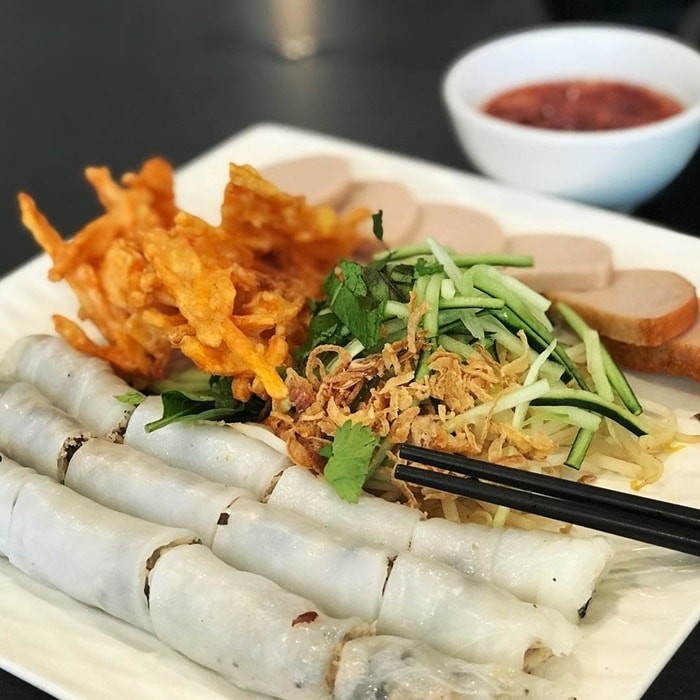Bánh Cuốn Làng Kênh
1. Overview
Bánh Cuốn Làng Kênh is a beloved traditional dish from the Kênh village in Nam Định, Vietnam. This dish features thin, steamed rice rolls filled with seasoned minced pork and wood ear mushrooms, served with aromatic herbs and a sweet-savory dipping sauce. It’s a humble yet flavorful breakfast or light meal, deeply rooted in local culinary culture.
2. Key Ingredients
The dish is made with fresh, local ingredients:
-
Rice batter (bột gạo): Made from finely ground rice mixed with water, creating a smooth, runny batter used to form thin rice sheets.
-
Filling: A mixture of minced pork, finely chopped wood ear mushrooms, and shallots, sautéed until fragrant.
-
Fried shallots (hành phi): Added on top for aroma and texture.
-
Fresh herbs: Such as Vietnamese coriander and mint, to add freshness.
-
Dipping sauce (nước chấm): A fish sauce-based blend with sugar, lime juice, garlic, and chili.
-
Optional: Slices of Vietnamese pork sausage (chả lụa) often accompany the dish.
3. How It’s Made
-
The rice batter is spread thinly over a hot cloth stretched across a pot of boiling water.
-
After a few seconds, the steamed rice sheet is lifted off skillfully with a bamboo stick.
-
It is quickly filled with the pork-mushroom mixture and rolled up neatly.
-
The rolls are placed on a plate, topped with fried shallots, and served with herbs and dipping sauce.
4. Flavor Profile
Bánh Cuốn Làng Kênh offers a delicate yet rich taste:
-
The rice rolls are thin, soft, and slightly chewy.
-
The filling is savory and aromatic from pork and mushrooms.
-
The dipping sauce adds sweetness, saltiness, and a bit of tanginess.
-
Herbs and fried shallots bring freshness and crunch, balancing the soft texture of the rolls.
5. Cultural Significance
Kênh village has a long-standing tradition of making bánh cuốn. Many families have passed down their techniques through generations, and some households even specialize in selling this dish to markets and eateries across Nam Định. It’s more than just food – it’s part of the cultural identity of the village.
6. Where to Try It
If you’re in Nam Định, especially near the Kênh area, you can find this dish in local morning markets or roadside stalls. It’s best enjoyed fresh, right after it's made, with steam rising from the delicate rolls.


